Airbus A320
description: family of single-aisle commercial jet airliners by Airbus
41 results

The Elements of Choice: Why the Way We Decide Matters
by
Eric J. Johnson
Published 12 Oct 2021
Choosing a plausible path is a form of load shedding: it involves making decisions about what is crucial information to consider for meeting goals and what information is nonessential and can be taken off-line. The way information is displayed to the chooser influences their choice of a plausible path. Lost in the discussion of the bravery of Sullenberger, First Officer Skiles, and the three flight attendants was the role of the cockpit displays. The plane they flew, an Airbus A320, is flown using a single primary electronic display that sits right in front of the pilot. Without that display, Flight 1549 could have had a very different outcome. It played an essential role in the landing (but was not, like the crew of Flight 1549, given the key to New York City by the mayor).
…
In addition, two more displays could also be added, one for the current flight angle and one for the best flight angle. We might reason that both sets of information are really important and deserve their own meters so they can be easily seen. In addition, because Sullenberger was such an expert, having had about five thousand hours at the controls of the Airbus A320, you might believe that he could easily surmise the dot speed and intuitively know how quickly the plane was accelerating or decelerating. But, by doing the calculations for him, the airspeed tape gave Sullenberger valuable extra time to think about other factors. Sullenberger knew the A320’s airspeed tape intimately and reported that he used it frequently during the landing.6 He knew this gauge was important.
…
It is, in general, designed without the realization that choice architecture can influence how and what we choose. But a good choice architecture, like a well-designed cockpit, allows the decision-maker to quickly observe what is important, ignore what is not, and combine the relevant information. Compare the Airbus A320 cockpit to the typical webpage you might see when buying something on the internet, even from a large, well-regarded retailer like Amazon. If I search for laundry detergent, I am given twenty pages of results, each page containing fifteen options. Each page also has twelve ads (including one for a men’s deodorant and another for garbage bags!).
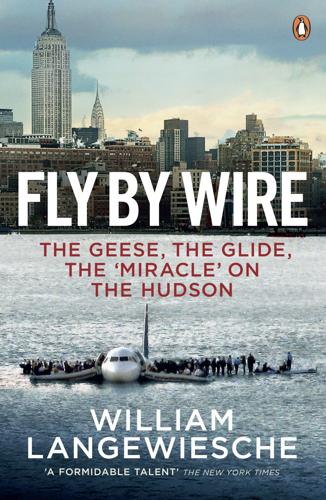
Fly by Wire: The Geese, the Glide, the Miracle on the Hudson
by
William Langewiesche
Published 10 Nov 2009
On Manhattan’s west side, a few people who happened to be looking toward the Hudson River caught a glimpse of an airline accident that initially brought back memories of another case, eight years earlier, of airplanes crashing into the heart of New York. This time it was US Airways Flight 1549, an Airbus A320 that ran into a flock of geese, lost thrust from both engines, and glided without power to a safe landing in the Hudson’s frigid waters. The Department of Homeland Security flashed its badges, but only as bureaucracies do. There were no foreign terrorists here. The geese were innocent birds. The captain was the very definition of a good citizen, a man named Chesley Sullenberger whose life until now had been so uneventful that many of his peers at US Airways had overlooked his presence.
…
Apparently he thought you just can’t be too careful in life. That was the tone of the entire hearing. The chief investigator led off with a bare-bones summary of the accident: it occurred on January 15, 2009, at 3:27 p.m.; there were 150 passengers and five crew members aboard; they were in an Airbus A320 bound from New York’s LaGuardia Airport for Charlotte, North Carolina; the time from liftoff to the bird strike was 1 minute, 37 seconds; the birds were Canada geese at 2,700 feet; the geese caused a nearly complete loss of thrust by wrecking both engines; the glide to the river lasted 3 minutes, 31 seconds; the total flight time therefore was 5 minutes, 8 seconds; after the water landing the first rescue boat arrived in 3 minutes, 45 seconds; one flight attendant and four passengers were seriously injured; there were no fatalities.
…
After pushing back from the gate, they had the airplane deiced. They lifted off from Pittsburgh at 8:56 in the morning, and two hours later they landed, after a typically uneventful flight. In Charlotte they switched airplanes for a scheduled flight to LaGuardia. The assigned airplane was a 150-passenger Airbus A320, about nine years old, a veteran of 16,298 flights and 25,239 hours of operation. Two days earlier, on a flight from LaGuardia, its right engine had burped because of a faulty temperature probe. The airline’s mechanics had replaced the probe. The airplane was in excellent shape. Skiles had a slice of pizza in the Charlotte terminal before settling with Sullenberger into the cockpit.
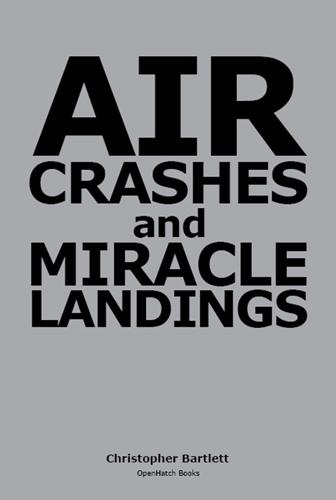
Air Crashes and Miracle Landings: 60 Narratives
by
Christopher Bartlett
Published 11 Apr 2010
While Air France has perhaps raised its game since then, those other airlines may not have done so. Once again, although one can fault Captain Asseline, it was an accident where many factors came into play. INDIAN AIRLINES AIRBUS A320 (Bangalore 1990) Another A320 Crash The A320’s engine manufacturer subsequently improved reaction time, and the aircraft operated for a time without further crashes. However, just as Airbus seemed to be leaving the bad publicity of the Habsheim crash behind it, there was another Airbus A320 crash. [Indian Airlines Flight 605] The Indian Airlines[101] A320 Airbus had taken off from Bombay (Mumbai) with 146 people on board, including two captains in the cockpit.
…
PREFACE ACKNOWLEDGEMENTS INTRODUCTION CHAPTER 1 LOSS OF POWER OVER WATER THE AMELIA EARHART MYSTERY (Howland Island 1937) BA 747 LOSES ALL POWER (Indian Ocean 1982) HIJACKED ETHIOPIAN 767 DITCHES (Comoros 1996) 80-MILE ATLANTIC GLIDE (Azores 2001) US AIRWAYS FLIGHT 1549 (Hudson River 2009) CHAPTER 2 LOSS OF POWER OVER LAND CONSCIENTIOUS CREW FORGET FUEL REMAINING (Portland 1978) GLIDING EXPERIENCE SAVES THE DAY (Gimli, Canada 1983) AVIANCA FLIGHT 52 MISSES LAST CHANCE (New York 1990) CHARTS DID NOT SHOW BUILT-UP AREAS (London 2004) BA 777 STAGGERS INTO HEATHROW (London 2008) CHAPTER 3 RUNWAY OVERRUNS 100-MPH QANTAS OVERRUN (Bangkok 1999) AIR FRANCE A340 GUTTED BY FIRE (Toronto 2005) CHAPTER 4 MID-AIR COLLISIONS & TCAS TWO JAL AIRCRAFT IN NEAR MISS (Japan 2001) DHL CARGO 757 & TU-154 COLLIDE (Lake Constance 2002) CHAPTER 5 GROUND COLLISIONS KLM 747 ENCOUNTERS PAN AM 747 ON TAKEOFF (Tenerife 1977) SIA 747 TAKES OFF ON DISUSED RUNWAY (Taipei 2000) FRENCH AIRLINER CLIPS UK FREIGHTER (Paris CDG 2000) SAS MD-87 ENCOUNTERS CESSNA ON TAKEOFF (Milan 2001) CHAPTER 6 NO CONTROLLABILITY DC-10 CARGO DOOR OPENS INFLIGHT (Windsor/Detroit 1972) PACKED DC-10 CRASHES MINUS 6 PASSENGERS (Paris 1974) TEXTBOOK SPEED SEALS DC-10 FATE (Chicago 1979) JL123, WORST SINGLE AIRCRAFT DISASTER (Japan 1985) UNCONTROLLABLE DC-10’S MIRACLE LANDING (Sioux City 1989) DHL AIRBUS MANEUVERED BY ENGINE POWER (Baghdad 2003) CHAPTER 7 FIRE & SMOKE FIRE IN VARIG 707 TOILET ON APPROACH TO ORLY (Paris 1973) TRISTAR DELAYS EVACUATION (Riyadh 1980) 737 STOPS WITH FIRE UPWIND (Manchester, UK 1985) 737 PILOTS SHUT DOWN WRONG ENGINE (Kegworth, UK 1989) TWA-800, CENTER FUEL TANK EXPLODES (JFK-Outbound 1996) HAZMAT VALUJET (Everglades, Florida 1996) SWISSAIR-111 ONBOARD FIRE (JFK-Outbound 1998) SUPERSONIC CONCORDE (Paris CDG 2000) CHAPTER 8 PILOT SICK, SUICIDAL, OR INAPPROPRIATE RESPONSE BEA TRIDENT CAPTAIN’S HEART ATTACK (Staines, London 1972) WAS EGYPTAIR FLIGHT 990 SUICIDE? (JFK-Outbound 1999) PILOT SWISHES-OFF AIRBUS TAIL (JFK-Outbound 2001) COLGAN AIR (On Approach to Buffalo Niagara International 2009) CHAPTER 9 ‘FLY-BY-WIRE’ NEW A320 CRASHES AT AIR SHOW (Habsheim 1988) INDIAN AIRLINES AIRBUS A320 (Bangalore 1990) QF72, INFLIGHT UPSET OF QANTAS A330 (Off N. Australia 2008) AF447, A SEMINAL ACCIDENT (S. Atlantic 2009) CHAPTER 10 METAL FATIGUE & STRUCTURAL FAILURE THE FIRST JETLINER, THE COMET (Comets 1954) SECTION OF ROOF BLOWN OFF ALOHA 737 (Hawaii 1988) CARGO HOLD DOOR FAILS ON 747 (Honolulu 1989) CHINA AIRLINES/EL AL 747F ENGINE MOUNTS (1991/1992) CHAPTER 11 INVISIBLE DANGERS—TURBULENCE SIGHTSEEING BOAC 707 BREAKS UP (Mt Fuji, Japan 1966) WIND SHEAR & MICROBURSTS (1982/1985) UA 747-100 FLIGHT 826 DROPS 1,000 FT (Off Japan 1997) CHAPTER 12 CONTROLLED FLIGHT INTO TERRAIN (CFIT) FAILED INDICATOR BULB (Everglades (Florida) 1972) PRE-PROGRAMMED TO HIT MT EREBUS (Antarctica 1979) AIR INTER AIRBUS A320 (Sainte Odile 1992) MASKING TAPE BLINDFOLDS 757—PITOT BLOCKED (Lima 1996) CHAPTER 13 MISCELLANEOUS INCIDENTS ‘RED BARON’ THE GERMAN FIGHTER ACE (Allied Lines 1918) USING ENGINES TO CLEAR FOG DOOMS AIRCRAFT (Zurich 1963) ROGUE CONTROLLER DELETES DATA (JFK 1979/1980) TEENAGER AT CONTROLS OF AEROFLOT A310 (Russia 1994) HELIOS 737 FAILS TO PRESSURIZE (Greece 2005) CHAPTER 14 DECISIONAL ACCIDENTS —MILITARY ACTION KAL902 (Kola, Russia 1978) KAL007 (Sakhalin Island 1983) US WARSHIP DOWNS IRANIAN AIRLINER (Persian Gulf 1988) CHAPTER 15 AIRLINERS MORPH INTO FLYING BOMBS FAILED PRECURSOR TO 9/11 (Marseille 1994) 9/11—AIRLINERS FLOWN INTO BUILDINGS (US 2001) CHAPTER 16 QUESTIONS & ANSWERS INDEX ENDNOTES: clicking on the endnote number takes one directly to it.
…
Atlantic 2009) CHAPTER 10 METAL FATIGUE & STRUCTURAL FAILURE THE FIRST JETLINER, THE COMET (Comets 1954) SECTION OF ROOF BLOWN OFF ALOHA 737 (Hawaii 1988) CARGO HOLD DOOR FAILS ON 747 (Honolulu 1989) CHINA AIRLINES/EL AL 747F ENGINE MOUNTS (1991/1992) CHAPTER 11 INVISIBLE DANGERS—TURBULENCE SIGHTSEEING BOAC 707 BREAKS UP (Mt Fuji, Japan 1966) WIND SHEAR & MICROBURSTS (1982/1985) UA 747-100 FLIGHT 826 DROPS 1,000 FT (Off Japan 1997) CHAPTER 12 CONTROLLED FLIGHT INTO TERRAIN (CFIT) FAILED INDICATOR BULB (Everglades (Florida) 1972) PRE-PROGRAMMED TO HIT MT EREBUS (Antarctica 1979) AIR INTER AIRBUS A320 (Sainte Odile 1992) MASKING TAPE BLINDFOLDS 757—PITOT BLOCKED (Lima 1996) CHAPTER 13 MISCELLANEOUS INCIDENTS ‘RED BARON’ THE GERMAN FIGHTER ACE (Allied Lines 1918) USING ENGINES TO CLEAR FOG DOOMS AIRCRAFT (Zurich 1963) ROGUE CONTROLLER DELETES DATA (JFK 1979/1980) TEENAGER AT CONTROLS OF AEROFLOT A310 (Russia 1994) HELIOS 737 FAILS TO PRESSURIZE (Greece 2005) CHAPTER 14 DECISIONAL ACCIDENTS —MILITARY ACTION KAL902 (Kola, Russia 1978) KAL007 (Sakhalin Island 1983) US WARSHIP DOWNS IRANIAN AIRLINER (Persian Gulf 1988) CHAPTER 15 AIRLINERS MORPH INTO FLYING BOMBS FAILED PRECURSOR TO 9/11 (Marseille 1994) 9/11—AIRLINERS FLOWN INTO BUILDINGS (US 2001) CHAPTER 16 QUESTIONS & ANSWERS INDEX ENDNOTES: clicking on the endnote number takes one directly to it.
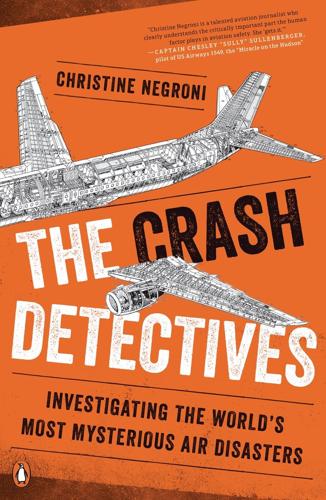
The Crash Detectives: Investigating the World's Most Mysterious Air Disasters
by
Christine Negroni
Published 26 Sep 2016
In the spring of 2015, Lubitz would commandeer his own flight from Barcelona to Dusseldorf and fly it into a mountain, killing himself and 149 others. The thirty-four-year-old captain, Patrick Sondenheimer, had left the cockpit to go to the bathroom after leveling the plane at thirty-eight thousand feet. With Sondenheimer gone and the cockpit door locked, Lubitz put the Airbus A320 on an autopilot descent to one hundred feet, a path that would take the plane directly into the high terrain in the French Alps. Lubitz overrode the captain’s attempts to return to the flight deck and did not reply to radio calls from controllers. For eleven minutes the plane descended, until finally it hit a mountain near Prads-Haute-Bléone.
…
The plane hit a seawall at the edge of the runway bordering San Francisco Bay, slammed onto the ground, and pivoted up before hitting the runway a second time. Lee Kang-guk, the captain, in the left seat, had ten thousand total flight hours on other jets but just thirty-three on the Boeing 777. He was transitioning from the Airbus A320 narrow-body under the supervision of Capt. Lee Jung-min, who was in the right seat. After the accident, Lee Kang-guk told investigators that he delayed initiating a go-around because he thought “only the instructor captain had the authority.” How open pilots are to asserting themselves, pointing out the errors of superiors, or acknowledging their own fallibility is highly influenced by culture.
…
“Thank God,” Norhisham said when Flight 124 landed safely with no injuries, though everyone on board the airplane was shaken. Only then did Norhisham stop and think about the “very thin margin of survival.” He had joined a fraternity of pilots who had knowingly broken the last link in the chain to calamity. Three and a half years later, Chesley Sullenberger and Jeff Skiles ditched an Airbus A320 in New York’s Hudson River after geese flew into the engines following takeoff from LaGuardia Airport. In September 2010, Andrei Lamanov and Yevgeny Novoselov landed on an abandoned runway in northwestern Russia that was half as long as their aircraft required. A total power failure on a the Tupelov TU-154 caused all the fuel pumps to fail, starving the engines and leading to the loss of all navigation and radio equipment on what should have been a five-hour flight to Moscow.
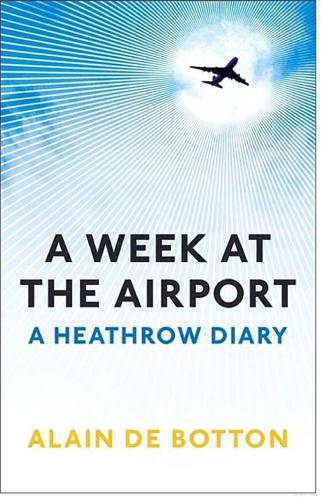
A Week at the Airport: A Heathrow Diary
by
Alain de Botton
Published 1 Jan 2009
He had pictured himself playing with the children in the palm-lined garden and eating grilled fish and olives with Louise on the terrace. But although David had reflected at length on his stay in the Peloponnese, there were still many things that managed to surprise him at Terminal 5. He had omitted to recall the existence of the check-in line or to think of just how many people can be fitted into an Airbus A320. He had not focused on how long four hours can seem nor had he considered the improbability of all the members of a family achieving physical and psychological satisfaction at approximately the same time. He had not remembered how hurtful he always found it when Ben made it clear that he disproportionately favoured his mother or how he himself invariably responded to such rejections by becoming unproductively strict, which in turn upset his wife, who liked to voice her opinion that Ben’s reticence was due primarily to the lack of paternal contact he had had since his father’s promotion.
…
But the staff shied away from existential issues, seeming to restrict their insights to matters relating to the transit time to adjacent satellites and the location of the nearest toilets. Yet it was more than a little disingenuous for the airline to deny all knowledge of, and responsibility for, the metaphysical well-being of its customers. Like its many competitors, British Airways, with its fifty-five Boeing 747s and its thirty-seven Airbus A320s, existed in large part to encourage and enable people to go and sit in deckchairs and take up (and usually fail at) the momentous challenge of being content for a few days. The tense atmosphere now prevailing within David’s family was a reminder of the rigid, unforgiving logic to which human moods are subject, and which we ignore at our peril when we see a picture of a beautiful house in a foreign country and imagine that happiness must inevitably accompany such magnificence.

Future Perfect: The Case for Progress in a Networked Age
by
Steven Johnson
Published 14 Jul 2012
Because computers were involved, it became easier to provide assistance to the pilot in real time, even if the autopilot was disengaged, preventing stalls, or stabilizing the plane during turbulence. Inspired by the NASA model, engineers at Airbus in the early 1980s built an exceptionally innovative fly-by-wire system into the Airbus A320, which began flying in 1987. Twenty-one years later, Chesley Sullenberger was at the controls of an A320 when he collided with that flock of Canada geese. Because his left engine was still able to keep the electronics running, his courageous descent into the Hudson was deftly assisted by a silent partner, a computer embodied with the collective intelligence of years of research and planning.
…
Sullenberger was in command of the aircraft as he steered it toward the Hudson, but the fly-by-wire system was silently working alongside him throughout, setting the boundaries or optimal targets for his actions. That extraordinary landing was a kind of duet between a single human being at the helm of the aircraft and the embedded knowledge of the thousands of human beings that had collaborated over the years to build the Airbus A320’s fly-by-wire technology. It is an open question whether Sullenberger would have been able to land the plane safely without all that additional knowledge at his service. But fortunately for the passengers of flight 1549, they didn’t have to answer that question. — The popular response to the Miracle on the Hudson encapsulates just about everything that is flawed in the way we think about progress in our society.
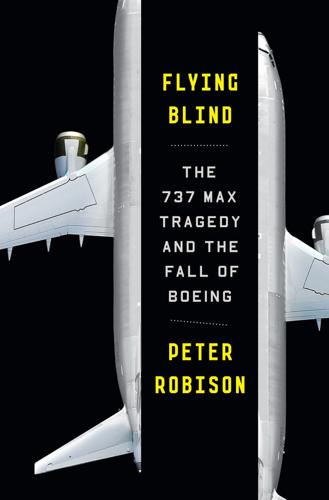
Flying Blind: The 737 MAX Tragedy and the Fall of Boeing
by
Peter Robison
Published 29 Nov 2021
(Even the space shuttle, originally developed in the 1970s, had five separate computers.) That leaves passengers on the 737, in comparison to planes like the Airbus A320 or Boeing’s own 787, more vulnerable to decisions made in the heat of the moment by confused pilots. Accidents, thankfully, are still extremely rare; in 2018, there was a fatal crash once in every three million flights. But there were forty-one total accidents that year (including nonfatal ones), and eighteen of those involved the 737, more than the number for any other airplane, according to Boeing’s own statistical summary. The Airbus A320 and its variants had four—even though the number of planes in service was similar for each model.
…
What’s more, with the initial investments in design and factory tooling long since paid off, the plane was a cash cow: the profit on each one was $12 million. The persistent issue remained: In the biggest, most important part of the aircraft market, the 737 was no longer the premier product. The Airbus A320 was. And airline customers knew it. Few thought of the 737 as the industry’s Apple iPhone; it was more like the Kyocera DuraForce Pro 2, whose defining characteristic was that it was cheaper. One day in 2010, while Albaugh was hosting a group of consultants, his assistant came in and said Michael O’Leary, the brash chief executive of Ireland’s Ryanair, was on the line.

The Glass Cage: Automation and Us
by
Nicholas Carr
Published 28 Sep 2014
Sooner or later, even the most advanced technology will break down, misfire, or, in the case of a computerized system, encounter a cluster of circumstances that its designers and programmers never anticipated and that leave its algorithms baffled. In early 2009, just a few weeks before the Continental Connection crash in Buffalo, a US Airways Airbus A320 lost all engine power after hitting a flock of Canada geese on takeoff from LaGuardia Airport in New York. Acting quickly and coolly, Captain Chesley Sullenberger and his first officer, Jeffrey Skiles, managed, in three harrowing minutes, to ditch the crippled jet safely in the Hudson River. All passengers and crew were evacuated.
…
Abbott, Kathy, 55 accidents: automotive, 7, 70, 91, 153, 154–55, 207, 208 plane, 43–45, 54, 55, 154, 169–70 accountants, accounting firms, 76–77 action, human, 85, 132, 147–51, 160, 210, 213–14, 215, 217, 218 hierarchy of, 65–66 Adams, Thomas, 191 adaptive automation, 165 Addiction by Design (Schüll), 179n agriculture, 218, 222 Airbus A320 passenger jet, 50–52, 154 Airbus Industrie, 50–52, 168, 169–70 Air Force, U.S., 173 Air France Airbus A330, 45, 54, 169–70 airlines, 1, 43–46, 53–55, 59, 168–70, 172–73 air-traffic control, 170 Albaugh, James, 59 alert fatigue, 104 algorithms, 116–22 ethics and, 183–84, 186–87 predictive, 116–17, 123, 198 Amazon, 118, 195 American Health Information Community, 94 American Machinist, 34, 174 Andreessen, Marc, 40 Android, 153, 199 animals: body-object blending in, 150–51 killing of, 183–84, 185 animal studies, 87–92, 133, 219 antiaircraft guns, 35–36, 37, 41 anxiety, 14, 16, 19, 59, 220 Aporta, Claudio, 126–27 Apple, 41, 118, 136, 203 apprenticeship, 109, 113, 147 apps, 12, 13, 17, 33, 40, 91, 133, 202 gamification and, 179n see also specific apps architects, architecture, 12, 69, 137–48, 167 “Are Human Beings Necessary?”

Speed
by
Bob Gilliland
and
Keith Dunnavant
Most of the passengers who regularly cruise from city to city at 600 miles per hour, six miles above the earth, do so with a confidence approaching certitude. After all, flying in an airliner is now much safer than other forms of transportation. Of course, sometimes things go wrong. On January 15, 2009, when I was sitting in the captain’s seat of an Airbus A320 climbing away from New York’s LaGuardia Airport, multiple bird strikes caused the loss of both engines. Suddenly U.S. Airways Flight 1549 was crippled. As we glided above Manhattan, the silence of those usually roaring engines was eerie. With only seconds to react to this catastrophic failure, First Officer Jeff Skiles and I quickly worked the problem.
…
By this point in his life, the middle-aged aerospace engineer had logged several million miles as a paying customer, encountering his share of bumpy rides. Fascinated with aviation from an early age, Lee had already achieved a rare distinction—riding along on the first commercial flights of the Boeing 747, the Airbus A320, and the Boeing 787 Dreamliner, three signature airliners of the modern age. In time, he would add the Airbus A350 to his list of firsts, further demonstrating his passion for cutting-edge experiences. But this flight was historic in a different way. In one row of the first-class cabin sat Neil Armstrong, the first man on the moon.

The Disappearing Act
by
Florence de Changy
Published 24 Dec 2020
However, once he is alone in the cockpit behind the armoured security door, the fate of the aircraft is sealed. Germanwings Flight 9525: a mentally ill pilot The most recent and memorable case of pilot suicide was that of Flight 9525 of the Lufthansa subsidiary Germanwings. On 24 March 2015, an Airbus A320 flying from Barcelona to Düsseldorf crashed at full speed into the side of a mountain in the southern French Alps. The aircraft exploded on impact and the 150 people on board perished instantly. Apart from the engines, wheels and a few pieces of the airframe, the great majority of the debris recovered measured less than 30 centimetres.
…
As for Laurent Lamy, the nolle prosequi was so upsetting that he decided to distance himself from the case he had fought for relentlessly during the last 10 years … One quickly realises that when it comes to deciding who is liable for a plane crash – the dead pilots on the one hand, or the aircraft with its reputation and that of its country of origin to think of, on which thousands of jobs and billions of dollars’ worth of contracts may depend, on the other – the pilot’s honour is not worth much. And when the pilot emerges alive from the crash he is meant to have caused, things get more complicated still. Air France Flight 296, or the ‘Habsheim crash’ On 26 June 1988, an Airbus A320-111 performed a demonstration flyover at the Habsheim Air Show, having taken off from Basle–Mulhouse Airport. The pilot-in-command, 44-year-old Michel Asseline, had been with Air France for 20 years, had accumulated more than 10,000 flight hours and enjoyed a solid reputation. He had directed the flight tests of the A320 and had already tested the aircraft beyond its official limits.
…
In a word, in the unfortunate case of an air crash, truth is almost bound to be the first casualty. 1 Various documentaries and counter-investigations have suggested other reasons for the Concorde crash, including a fire in one of the engines. 2 BEA preliminary report on Germanwings Flight 9525, May 2015. 3 Air New Zealand Flight 176 from Perth to Auckland, 21 May 2014. 4 National Transportation Safety Committee, Investigation of Aircraft Accident SilkAir Flight MI 185 Boeing B737-300, 9V-TRF Musi River, Palembang, Indonesia, 19 December 1997, Final Report, Jakarta, 14 December 2000. 5 Eastwind Airlines Flight 517, 6 June 1996. 6 Jean-Paul Mari, ‘Contre-enquête sur une catastrophe aérienne, EgyptAir: le suicide était presque parfait’ (‘Counter-inquiry into an air catastrophe: The suicide was almost perfect’), 9 December 1999. www.grands-reporters.com. 7 Ibid. 8 The FAA is the American Federal Aviation Administration, the regulator of civil aviation in the US. 9 ‘Mayday-S03E08-Death and Denial (Egyptair 990)’ Air Crash Investigation, National Geographic, 2 November 2005. 10 Taiwan Transportation Safety Board, Final Report on TransAsia Flight GE235 Occurrence Investigation, 30 June 2016. 11 Ibid. 12 Final Report on the accident on 1st June 2009 to the Airbus A330-203 registered F-GZCP operated by Air France Flight AF 447 Rio de Janeiro–Paris, July 2012 (available at www.bea.aero/docspa/2009/f-cp090601.en/pdf/f-cp090601.en.pdf). 13 ‘Commission d’enquête sur l’accident survenu le 26 juin 1988 à Mulhouse-Habsheim (68) à l’Airbus A320, immatriculé F-GFKC, 24 April 1990’, p. 20. 14 P. Gille and H. Gendre, ‘Habsheim ou la Raison d’État’, SNPL, available at www.crashdehabsheim.net/Dossier%20SNPL%20presentation.htm. 15 Ina, ‘Suite crash Airbus Mulhouse’, 2 June 1989, available at www.ina.fr/video/CAC90001481. 16 Norbert Jacquet, Airbus, L’assassin habite à l’Élysée, Éditions Premières Lignes, 1994, p. 75. 17 Lion Air Flight 610 crashed on 29 October 2018, killing 189 people.
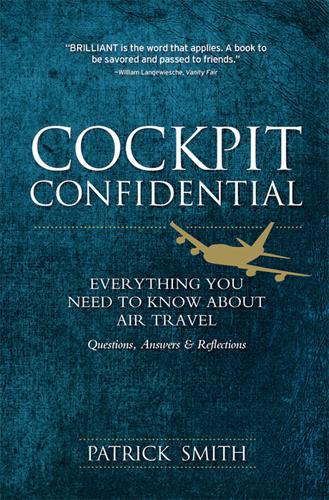
Cockpit Confidential: Everything You Need to Know About Air Travel: Questions, Answers, and Reflections
by
Patrick Smith
Published 6 May 2013
In a few instances, certification to fly different models is the same, as with the Airbus A330/A340 and Boeing 757/767, but these planes were designed with dual-qualification in mind and are exceptions to the rule. There are enormous differences between aircraft types, and switching from one to another entails a lengthy syllabus of classroom and simulator training. At the moment, I fly the 757 and 767. If you threw me into the cockpit of an Airbus A320, I’d be hard pressed to get an engine started. Transitioning to another model, or upgrading from first officer to captain of the same model, pilots undergo a complete training regimen. Even if you’ve previously checked out on a particular plane, you’ll sweat through an extensive requalification program.
…
In this example, passengers come home with, “Oh my god, the plane was on fire.” Not that people aren’t bright enough to figure out what is or isn’t dangerous, but we’re dealing with jargon and terminology that begs to be misunderstood. This topic brings to mind the unfortunate saga of jetBlue flight 292, an Airbus A320 that made an emergency landing in Los Angeles in 2005 because of a landing gear problem. Although only a minor incident from a technical point of view, the entire affair was caught on live television, engrossing millions of Americans and needlessly scaring the daylights out of everybody on the plane: Moments after liftoff from Burbank, California, the pilots realized their forward landing gear had not properly retracted and was cocked at 90 degrees.
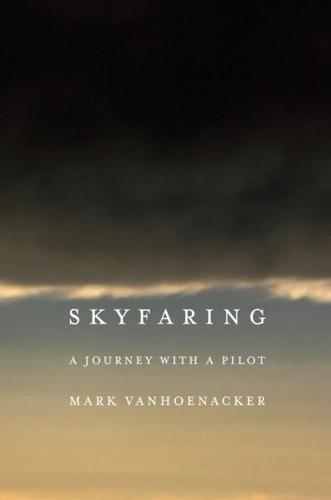
Skyfaring: A Journey With a Pilot
by
Mark Vanhoenacker
Published 1 Jun 2015
I liked many aspects of the country’s historic relationship with aviation, its deep tradition of air links with the whole world, and the fact that even some of the shortest flights from Britain are to places so very different from it. And, not least, I liked the idea of living near the good friends I’d made as a postgraduate there. I began to fly commercially when I was twenty-nine. I first flew the Airbus A320 series airliners, a family of narrow-bodied jets used on short- to medium-distance flights, on routes all around Europe. I’d be woken by an alarm in the 4 a.m. darkness of Helsinki or Warsaw or Bucharest or Istanbul, and there would be a brief bleary moment, in the hotel room whose shape and layout I’d already forgotten in the hours since I’d switched off the light, when I’d ask myself if I’d only been dreaming that I became a pilot.
…
The captain is still the skipper, often abbreviated to Skip as a term of direct address—“Hey, Skip.” As a copilot I am a first officer on an airliner; among the cabin crew are pursers. We talk of forward and aft; cabins, galleys, bulkheads, holds, yokes; manifests, tacking, coamings, and trim. We count aircraft by hulls. A colleague not sure if I am still flying the Airbus A320 or if I have switched to the Boeing 747, will ask me which fleet I am on. The small handle we use to turn the plane at low speeds on the ground, a sort of steering wheel that few visitors to the cockpit notice, is a tiller. Airplanes have rudders—and, in a linguistic twist analogous to those marine mammals that have re-evolved limbs better suited for their return to water, floatplanes may have water rudders.
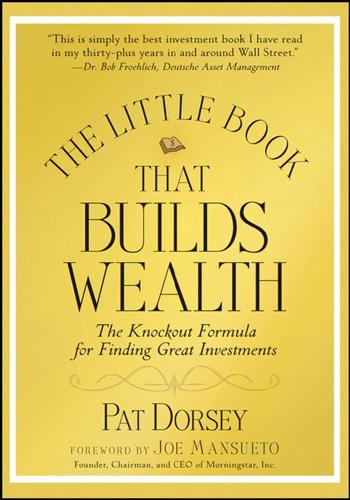
The Little Book That Builds Wealth: The Knockout Formula for Finding Great Investments
by
Pat Dorsey
Published 1 Mar 2008
Intel may have lower long-run costs, but if AMD has chips with much better performance—which has happened for periods of time—users will temporarily switch to its products. Moving from a really tiny product to a really big one, the story has been largely the same for narrow-body aircraft, believe it or not. Although they are amazingly complex products, a Boeing 737 and an Airbus A320 are not all that different from an airline’s perspective—they have similar ranges, carry a similar number of passengers, and so forth. So, an airline shopping for new planes is simply going to see which manufacturer—Boeing or Airbus—will give it the better deal, and make its decision largely on that basis.3 (Airlines that use just one type of plane, such as Southwest and JetBlue, are much more the exception than the rule.)

Concorde: The Thrilling Account of History’s Most Extraordinary Airliner
by
Mike Bannister
Published 29 Sep 2022
Would I come across to my trainees in that way my instructors had – those godlike beings who’d flown Lancasters and Halifaxes during the war? I couldn’t begin to see that I would, but the shiny new jets that had been in service when I’d joined BOAC were beginning to give way to a new generation of airliners – not just Concorde (which by now had been in service for almost a decade), but aircraft like the Airbus A320: a short-haul twinjet that, thanks to its next-gen turbofans and fly-by-wire flight controls – in which computers took the pilot’s inputs and translated them into digital commands that allowed the aircraft to perform at optimum efficiency – looked set to revolutionise air travel in the way that the 707 and VC10 had when they entered service.
…
Under the status quo, each fleet had had a senior manager who reported to a ‘Chief Pilot’ for a particular group of fleets, of which there were over a half-dozen. Under the new organisation, they wanted a flatter management structure, reducing reporting lines and costs. There would be a general manager for the long-haul fleets, which comprised the 747 and the 777, and a general manager for all the other fleets, made up of the 737, 757, 767, the Airbus A320 and its family – and Concorde. I was asked if I’d like to take on the short- and medium-haul fleets and I leapt at it. It was a promotion – up two grades from my ‘alpha’ management level – but, crucially, it contained a proviso that allowed me to continue to fly Concorde. I immediately appointed separate flight managers – one each for Concorde, the 757/767 fleet, as well as for the 737 and the A320.

The Checklist Manifesto: How to Get Things Right
by
Atul Gawande
Published 2 Jan 2009
“That was so long ago,” Sullenberger said, “and those gliders are so different from a modern jet airliner. I think the transfer of experience was not large.” It was as if we simply could not process the full reality of what had been required to save the people on that plane. The aircraft was a European-built Airbus A320 with two jet engines, one on each wing. The plane took off at 3:25 p.m. on a cold but clear afternoon, headed for Charlotte, North Carolina, with First Officer Jeffrey Skiles at the controls and Sullenberger serving as the pilot not flying. The first thing to note is that the two had never flown together before that trip.

Exit Strategy
by
Sherry Walling, Rob Walling
Published 22 Nov 2024
Afterword In Closing Acknowledgments Resources Other Works by the Authors Foreword by John Warrillow I often compare selling a business to the remarkable landing of US Airways Flight 1549 on the Hudson River. On January 15, 2009, Captain Chesley “Sully” Sullenberger faced an unprecedented challenge when both engines of his Airbus A320 failed just minutes after takeoff. Struck by a flock of geese, the plane lost all thrust, and Sully found himself in a dire situation over one of the most densely populated areas in the world. But Sully was no ordinary pilot. With over 20,000 hours of flight time, he was one of the most experienced pilots in the skies.
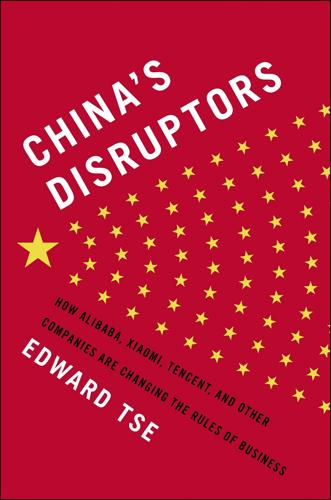
China's Disruptors: How Alibaba, Xiaomi, Tencent, and Other Companies Are Changing the Rules of Business
by
Edward Tse
Published 13 Jul 2015
It would love, for example, for the Commercial Aircraft Corporation of China (COMAC) and its other publicly owned aerospace firms to be able to take on Boeing and Airbus. And such businesses should not be written off; after decades of investment, COMAC’s C919 narrow-bodied, single-aisle passenger aircraft, designed to compete with the Boeing 737 and Airbus A320, should go into commercial production by the end of 2015. But what is changing is the government’s view of what it can expect from entrepreneurs, and this is having an effect on its relationship with state-owned enterprises. President Xi Jinping appears to recognize that China’s development will be best served by government ecouragment of the private sector.

Prediction Machines: The Simple Economics of Artificial Intelligence
by
Ajay Agrawal
,
Joshua Gans
and
Avi Goldfarb
Published 16 Apr 2018
On January 15, 2009, when US Airways Flight 1549 was struck by a flock of Canada geese, shutting down all engine power, Captain Chesley “Sully” Sullenberger miraculously landed the plane on the Hudson River, saving the lives of all 155 passengers. Most reporters attributed his performance to experience. He had recorded 19,663 total flight hours, including 4,765 flying an Airbus A320. Sully himself reflected: “One way of looking at this might be that for 42 years, I’ve been making small, regular deposits in this bank of experience, education, and training. And on January 15, the balance was sufficient so that I could make a very large withdrawal.”8 Sully and all his passengers benefited from the thousands of people he’d flown before.

Boeing Versus Airbus: The Inside Story of the Greatest International Competition in Business
by
John Newhouse
Published 16 Jan 2007
The success of low-cost carriers such as Southwest and JetBlue in the States, along with easyJet and others in Europe, raised the stakes. For Boeing, an especially bad patch began in 1998, when British Airways, until then an unswervingly loyal Boeing customer, decided against the 737 and instead bought fifty-nine Airbus A320 and A319 aircraft, with options for fifty-nine more. (The A319 is a slightly smaller version of the A320.) “There was a massive press,” said Christopher Buckley, an Airbus executive who tracked the event from the start. “The announcement was the lead story on the front page of the International Herald Tribune, probably the only time in history that an aircraft order has been deemed the top news item of the day in a major worldwide newspaper.”5 The most closely involved figure from British Airways was John Patterson, a senior vice president.

When to Rob a Bank: ...And 131 More Warped Suggestions and Well-Intended Rants
by
Steven D. Levitt
and
Stephen J. Dubner
Published 4 May 2015
What Captain Sullenberger Meant to Say (But Was Too Polite to Do So) (BY “CAPTAIN STEVE”) Captain Steve is a seasoned international pilot for a major U.S. carrier and a friend of Freakonomics. (Given the sensitivity of what he writes, he prefers anonymity.) This post was published on June 24, 2009, six months after the “The Miracle on the Hudson,” in which Captain Chesley Sullenberger safely landed an Airbus A320-200 in the Hudson River. Both the plane’s engines had failed, due to a bird strike, shortly after takeoff from LaGuardia Airport in New York. After reading some of the excerpts of Captain Sullenberger’s various speeches, especially those of a few weeks ago with the National Transportation Safety Board, I would like to add my editorial.
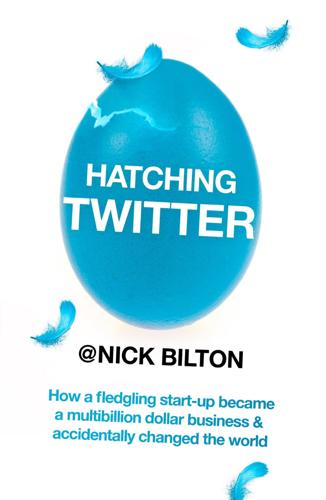
Hatching Twitter
by
Nick Bilton
Published 5 Nov 2013
“Hey, have you ever heard of Twitter?” people asked Noah in bars along the Venice boardwalk. “Whoa, why do you have so many followers?” they said in coffee shops on Abbot Kinney Boulevard. Twitter’s prominence in the headlines reached a pinnacle during an event dubbed “Miracle on the Hudson,” when an Airbus A320 with 155 passengers on board took off from New York’s LaGuardia Airport and was struck by a flock of birds. It landed safely in the Hudson River. A picture of the passengers escaping from the downed plane landed on Twitter, taken by a tourist on a ferry who had snapped a photo with his phone. And then it was all over the Web, magazines, and the nightly news.

The God Species: Saving the Planet in the Age of Humans
by
Mark Lynas
Published 3 Oct 2011
The only likely exception to the rule against biofuels is the urgent need to decarbonize air transportation, where low-carbon alternatives to liquid hydrocarbon fuels remain a distant prospect. While aviation has been demonized by environmentalists (myself included) in the past because of the climate change impact of aircraft emissions, in terms of fuel efficiency per passenger kilometer the latest large aircraft like the Airbus A320 and the Boeing 787 now compare favorably with small family cars. The reason why per capita emissions from an intercontinental flight are counted in the many tonnes of CO2 is the enormous distances covered: No one drives from London to Sydney. Reducing aggregate demand is not an option: Pleas by Greens for people to “give up flying” have found limited appeal to say the least, particularly given that most environmentalists I know continue themselves to enjoy the benefits of air transportation.31 Therefore, with over 2 billion people using air travel every year already, and rapid uptake in developing countries like India and China, technical substitutes for high-carbon aviation must rapidly be found.

The Elements of Power: Gadgets, Guns, and the Struggle for a Sustainable Future in the Rare Metal Age
by
David S. Abraham
Published 27 Oct 2015
If you don’t think planes are high tech, consider that the wires connecting the electronic wizardry in just one Boeing 747 extend over 130 miles. But the electronics onboard are just the beginning. Planes over the past fifty years have shed steel, replacing it with composite materials and lighter metals like titanium. For example, the new Airbus A350 frame is 14 percent titanium compared to 6 percent in the older Airbus A320. The increasing use of titanium is expected to lead to a doubling of titanium’s use in just five years to 41,200 tons by 2016.30 The most complex materials are increasingly found in engines. The National Academy of Sciences notes in its report, Minerals, Critical Minerals, and the U.S. Economy, that the recent advancements in propulsion systems are only possible because of improvements in using the high-temperature properties of minor metals like cobalt, rhenium, and yttrium.
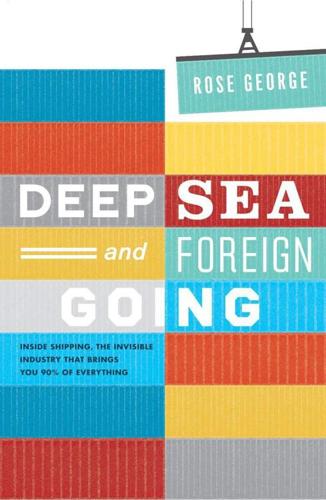
Deep Sea and Foreign Going
by
Rose George
Published 4 Sep 2013
He tried to call the barge and got no response, then watched in disbelief as the barge hit his ship, fracturing all three cargo tanks. Suddenly there he was in the middle of an environmental disaster ‘with hydrocarbons all around us’. Imagine that the ship was an aeroplane. Imagine, for example, that it was US Airways Airbus A320, landed on New York’s Hudson River by Captain Chelsey Sullenberger in 2009. Although fuel oil was discharged into the river, Captain Sullenberger was an immediate hero, because all lives were saved. No-one died either in the collision between the barge and Hebei Spirit. Yet Jasprit Chawla and his first officer were immediately thrown in jail.

Utopia Is Creepy: And Other Provocations
by
Nicholas Carr
Published 5 Sep 2016
Computers are wonderful at following instructions, but they’re lousy at improvisation. They resemble, in the words of computer scientist Hector Levesque, “idiot savants” who are “hopeless outside their area of expertise.” Their talents end at the limits of their programming. Human skill is less circumscribed. Think of Captain Sully Sullenberger landing that Airbus A320 on the Hudson River after its engines were taken out by a flock of geese. Born of deep experience in the real world, such intuition lies beyond calculation. If computers had the ability to be amazed, they’d be amazed by us. While our own flaws loom large in our thoughts, we view computers as infallible.

The Dealmaker: Lessons From a Life in Private Equity
by
Guy Hands
Published 4 Nov 2021
Such airlines tend to be start-ups, and so our policy was to lease them our oldest aircraft, factoring the risk we were taking into our financial calculations. Even then, there’s a risk because when an airline starts running into trouble, it often cannibalises its fleet for spares. AWAS had leased five Airbus A320–200s to Indian entrepreneur Vijay Mallya’s low-cost carrier Kingfisher Airlines. The company was perpetually suffering losses so we stationed someone at Kingfisher’s main hub in Bangalore to keep an eye on the aircraft and make sure nobody was taking them apart. Kingfisher finally ceased trading in 2013 when the Indian aviation authorities scrapped its domestic slots and international flying rights.
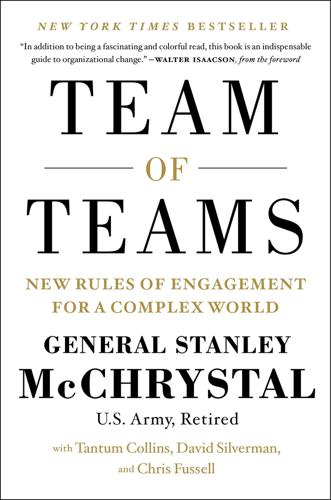
Team of Teams: New Rules of Engagement for a Complex World
by
General Stanley McChrystal
,
Tantum Collins
,
David Silverman
and
Chris Fussell
Published 11 May 2015
All emergency checklists and technical training designed to confront engine failures were premised on the assumption that such failure would transpire at cruising altitude above twenty thousand feet—an incapacitating event so low was unprecedented. In less than four minutes, the crew turned the plane around, prepared passengers for a crash landing, and splashed the Airbus A320 into the Hudson River. Everyone survived. United 173 had crashed despite having an hour of spare fuel, no incapacitating technical issues, and clear protocols for dealing with a landing gear failure. US Airways 1549 saved all of its passengers and crew minutes after encountering an unprecedented and critical issue for which they had no technical preparation at all.

Black Box Thinking: Why Most People Never Learn From Their Mistakes--But Some Do
by
Matthew Syed
Published 3 Nov 2015
Two birds flew into the right engine and at least one more into the left. After a series of loud thuds, the plane seemed to come to a halt, followed by deathly silence. The engines had lost thrust. The pilots felt their pulses racing, their perception narrowing: the classic responses to danger. They were now 3,000 feet above New York in a 70-ton Airbus A320 with no power. They had to make a series of split-second decisions. They were offered a return to LaGuardia, then a rerouting to Teterboro, an airport in the New Jersey Meadowlands, nineteen miles away. Both options were rejected. The plane would not glide that far. It was dropping too fast.

Why We Drive: Toward a Philosophy of the Open Road
by
Matthew B. Crawford
Published 8 Jun 2020
In fact, seizing control is just what antilock brakes, electronic stability control, and traction control do, and these have made big improvements to the safety of modern cars. But there are darker possibilities to worry about. Arguably, the event that kicked off the contemporary wave of human factors research into automation was the 1988 crash of an Airbus A320 at an airshow in Habsheim, France. The plane was full of journalists and raffle winners who felt lucky to be selected for this demonstration of the latest marvel. “The purpose of the flyover was to demonstrate that the aircraft’s computer systems would ensure that lift would always be available regardless of how the pilots handled the controls.”25 But as the pilots did a low-altitude flyby of the crowd, the plane put itself in landing mode.

Inviting Disaster
by
James R. Chiles
Published 7 Jul 2008
A modern cause for what at first appears to be machine madness is that the computer-driven system is in a different “mode” than the operator thinks it is. This was the case with Eastern Flight 401 before it crashed into the Everglades; the pilots thought the autopilot was keeping altitude, but the autopilot had given altitude control back to the pilots after someone inadvertently nudged the yoke. Several crashes with the Airbus A320 have seen pilots fighting the controls, with humans trying to land their aircraft when the machines wanted to climb the aircraft away from the airport. But it’s also true that airliners don’t crash very often, perhaps because people in a cockpit appreciate the precariousness of their position.

The Looting Machine: Warlords, Oligarchs, Corporations, Smugglers, and the Theft of Africa's Wealth
by
Tom Burgis
Published 24 Mar 2015
Guinea was still a case study in deprivation, but the ruling class had restored a little pride by resurrecting the national airline. There were speeches and a buffet. The German–Egyptian pilot, an alumnus of Thomas Cook Airlines, who had been brought in as chief executive of Air Guinée International, said a few words. So did the minister of transport. Although the new carrier’s fleet of Airbus A320s had been delayed by a few months, the minister explained, miniature replicas had been produced to allow the launch party to go ahead. Six months after the attempted assassination that had forced Dadis into exile the first competitive elections in Guinea’s history were days away, and only civilians would be competing.

Bank 3.0: Why Banking Is No Longer Somewhere You Go but Something You Do
by
Brett King
Published 26 Dec 2012
In 2008 Facebook tried to buy the rapidly growing social network and microblogging service, Twitter, for $500 million.5 In the same year, Tumblr launched. On 15 January 2009, US Airways Flight 1549, flying from LaGuardia Airport in New York to Charlotte, North Carolina, crashed in the Hudson River six minutes after take-off. Both engines of the Airbus A320 were disabled due to birdstrike by a flock of Canadian geese during its climb out. At 3:31pm, the plane made an unpowered ditch landing in the Hudson River. At 3:33pm (two minutes later) Jim Hanrahan (Twitter handle @highfours) tweeted the following: In February 2008, in the run-up to the US presidential elections, John McCain raised US$11 million through campaign fundraisers6 to support his nomination.

Autonomous Driving: How the Driverless Revolution Will Change the World
by
Andreas Herrmann
,
Walter Brenner
and
Rupert Stadler
Published 25 Mar 2018
For the vehicle to move in accordance with those instructions, the actuators have to be digitally controlled. The transfer of the control impulses is no longer mechanical but electronic (by wire). This form of control has been standard with airplanes for many years, at first in military aircrafts and later also in civil aircrafts (Airbus A320 in February 1987). To master the electronic control of actuators, the automotive industry can make use of the experience gained in the aerospace industry. Model 109 K e y T a ke a w a y s The basis for computerised information processing is the real-world model, which collates all the information from the passengers, sensors and other vehicles, and then adds the basic data (HD maps).

Imagine a City: A Pilot's Journey Across the Urban World
by
Mark Vanhoenacker
Published 14 Aug 2022
There’s the fact that it is once again the largest European city (a title it previously held for more than eight continuous centuries), and the glory suggested by the number of its former names (Byzantion or Byzantium, Constantinople, and at least half a dozen others, including the most stirring, Nova Roma, New Rome). It’s also one of the most distant cities I fly to as a pilot of the short-haul Airbus A320, and so, in the same simple terms in which I thought as a child, flights to Istanbul are by definition among my most momentous. Every twenty minutes or so we download a weather update, and the news isn’t good. The heavy snow has arrived earlier than forecast, and it’s accompanied by strong winds, in an ominous pairing that meets the official definition of a blizzard.
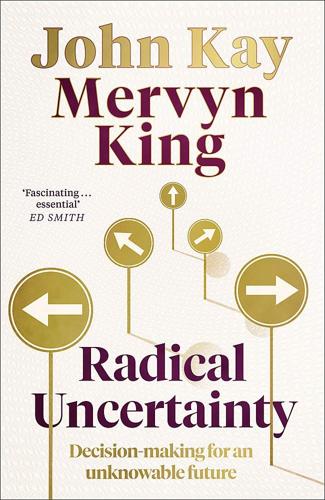
Radical Uncertainty: Decision-Making for an Unknowable Future
by
Mervyn King
and
John Kay
Published 5 Mar 2020
When his company embarked on a project to build the world’s largest commercial plane, the 747, a non-executive director who asked for financial projections was told that some studies had been made, but the responsible manager could not remember the results. 23 Allen’s tenure was followed by that of Phil Condit, who emphasised the need for a ‘value based environment’, allowed Airbus to become a formidable rival, and created no value for his shareholders. 24 Under Allen, Boeing also introduced the 737, which became the best-selling plane in aviation history. Struggling fifty years after that launched to compete with the more modern Airbus A320, Boeing chose not to design a new plane but to fit fuel-efficient engines to its ageing blockbuster. This modification proved more difficult than anticipated, requiring complex adjustments to the aircraft’s handling, and the two crashes of the 737 Max in 2018 and 2019 were uncannily reminiscent of the Comet disasters of 1954 – the result of unforeseen consequences from the decision to adapt an earlier design to new circumstances.

Crash of the Titans: Greed, Hubris, the Fall of Merrill Lynch, and the Near-Collapse of Bank of America
by
Greg Farrell
Published 2 Nov 2010
That evening, Ken Lewis held a conference call with his board of directors. The meeting was surreal. A few hours earlier, a Charlotte-bound U.S. Airways flight experienced engine trouble after taking off from LaGuardia Airport in New York. The captain, Chesley “Sully” Sullenberger, made a split-second decision to ditch the airplane, an Airbus A320, in the Hudson River rather than take a chance on being able to get back to an airport. More than a dozen BofA employees were on the flight, heading back to Charlotte after a four-day workweek in New York. Miraculously, the plane landed intact on the Hudson and stayed afloat for hours, allowing rescue teams to get everyone out alive.
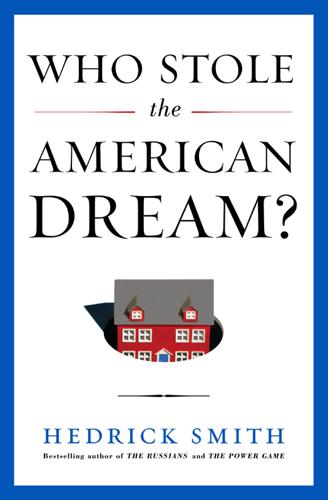
Who Stole the American Dream?
by
Hedrick Smith
Published 10 Sep 2012
Stock, bought by union members for $22 a share, shot up to $90. But it turned out that those were phantom gains, way beyond the value of United’s profits. Even in good times, United had been struggling. It piled up a multibillion-dollar debt buying or leasing a fleet of new wide-bodied Boeing 747s and 777s and Airbus A320 airliners. It got into periodic fights with the powerful pilots union. In 2001, United ran a $3.8 billion operating loss. After the 9/11 terrorist attack in 2001, fear of flying panicked the American public. United lost more traffic and revenue than most carriers. By early 2002, it was deep in debt.

Imagining India
by
Nandan Nilekani
Published 25 Nov 2008
“I knew from the beginning that we had to inoculate some politicians from IT opposition,” he says. In this, Seshagiri and the other IT-savvy bureaucrats were lucky to meet Rajiv Gandhi, who was much younger than other political leaders and just forty years old when he became prime minister. Trained as a pilot for the Airbus A320, Rajiv was generally unafraid of technology. “He was a tinkerer,” one bureaucrat who worked with him tells me. “He was always curious about how new technologies worked.” Rajiv’s attitude to the role of computers in governance was shaped early on by the Asian Games, which India hosted in 1982.

Facebook: The Inside Story
by
Steven Levy
Published 25 Feb 2020
This was a geeky dream that had gotten some serious attention: a company called Ascenta was actually building such an aircraft. Its CEO had formerly created a thrill ride for the Jurassic World theme park. Facebook bought the company for a reported $20 million and began building a prototype drone, dubbed Aquila. Its wingspan, covered with solar paneling, was the same as an Airbus A320 weighing nearly 100,000 pounds, yet the exotic materials of its frame kept the weight down to under a thousand pounds, less than a standard sedan. Aquila became Facebook’s unofficial mascot. There was a period when Zuckerberg would lead visitors to a piece of an Aquila wing he just so happened to have hanging around, standing taller than he was, and he would lift it like a kite.
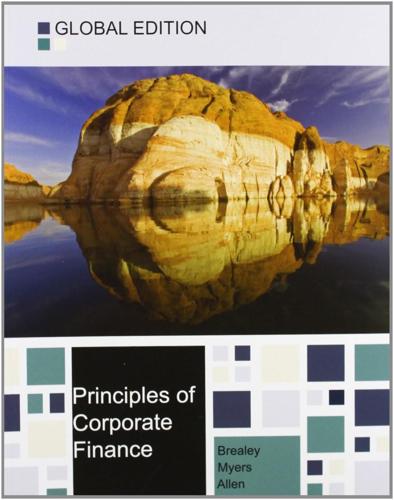
Principles of Corporate Finance
by
Richard A. Brealey
,
Stewart C. Myers
and
Franklin Allen
Published 15 Feb 2014
Long lead times mean that airlines that order planes today may end up not needing them. You can see why an airline might negotiate for an aircraft purchase option. In Section 10-4, we used aircraft purchase options to illustrate the option to expand. What we said there was the truth, but not the whole truth. Let’s take another look. Suppose an airline forecasts a need for a new Airbus A320 four years hence.11 It has at least three choices. • Commit now. It can commit now to buy the plane, in exchange for Airbus’s offer of locked-in price and delivery date. • Acquire option. It can seek a purchase option from Airbus, allowing the airline to decide later whether to buy. A purchase option fixes the price and delivery date if the option is exercised
…
Airbus will be happy to sell another A320 at any time in the future if the airline wants to buy one. However, the airline may have to pay a higher price and wait longer for delivery, especially if the airline industry is flying high and many planes are on order. The top half of Figure 22.6 shows the terms of a typical purchase option for an Airbus A320. The option must be exercised at year 3, when final assembly of the plane will begin. The option fixes the purchase price and the delivery date in year 4. The bottom half of the figure shows the consequences of “wait and decide later.” We assume that the decision will come at year 3. If the decision is “buy,” the airline pays the year-3 price and joins the queue for delivery in year 5 or later.
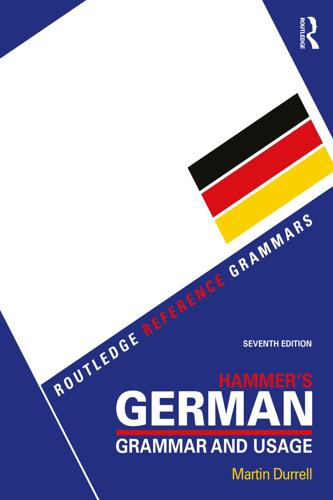
Hammer's German Grammar and Usage
by
Martin Durrell
Published 15 Feb 2021
(i) Mountains and mountain ranges der Ätna, der Brocken, der Montblanc, der Mount Everest, der Säntis der Balkan, der Harz, der Himalaja, der Jura, der Spessart, der Taunus There are some common exceptions, in particular compounds like das Erzgebirge, das Matterhorn, die Zugspitze and a few others, e.g. die Eifel, die Rhön, die Sierra Nevada. 1.1.5 Feminine nouns by meaning (a) Female persons and animals die Frau, die Gans, die Henne, die Kuh, die Mutter, die Sau, die Tante Notable exceptions are the archaic or derogatory das Weib as well as diminutives in -chen and -lein like das Fräulein (rarely used nowadays) and das Mädchen. The loan-word das Girl (see 1.1.9) is probably neuter by analogy with das Mädchen. (b) Aeroplanes, motorbikes and ships die Airbus A320, die Boeing 737 die BMW, die Honda die „Bismarck”, die „Bremen” However, names of aeroplanes and ships often keep the gender of the base word, e.g. der Airbus, der Storch; der „Albatros”, das „Möwchen”. (c) Native German names of rivers Including many rivers in Central or Eastern Europe where German has been widely spoken in the past: die Donau, die Elbe, die Ems, die Fulda, die Isar, die Lahn, die Maas, die Memel, die Moldau, die Mosel, die Neiße, die Oder, die Ruhr, die Saale, die Spree, die Weichsel, die Werra, die Weser There are a few important exceptions: der Inn, der Lech, der Main, der Neckar, der Rhein.